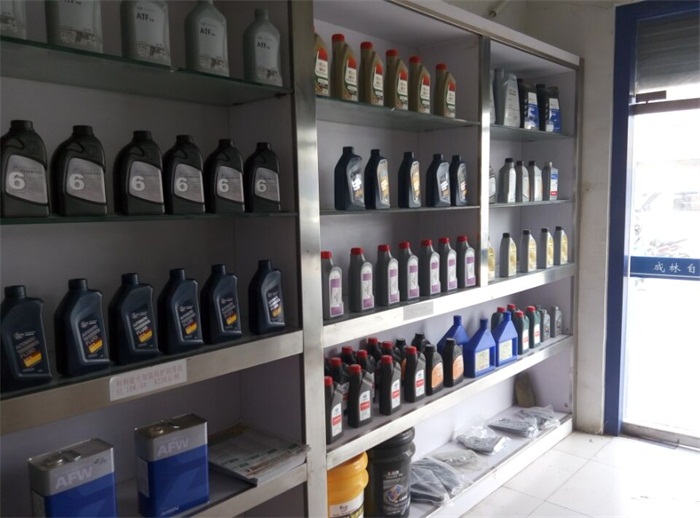


全國咨詢熱線
0531-82820798
苗經理(13806401238)
電話:0531-82820798
手機:13806401238
QQ:981562958
郵箱:981562958@qq.com
地址:濟南市槐蔭區張莊路8—3號
變速箱作為汽車傳動系統的核心部件,維修后若保養不當,不僅會影響駕駛體驗,還可能導致故障再次發生,甚至造成更嚴重的損壞。掌握科學的保養方法,是讓維修后的變速箱保持良好性能、延長使用壽命的關鍵。以下將從多個方面詳細介紹變速箱維修后的保養要點。
As the core component of the automotive transmission system, if the gearbox is not properly maintained after repair, it can not only affect the driving experience, but also lead to the recurrence of faults, and even cause more serious damage. Mastering scientific maintenance methods is the key to maintaining good performance and extending the service life of the repaired gearbox. The following will provide a detailed introduction to the maintenance points after gearbox repair from multiple aspects.
一、重視油液管理
1、 Pay attention to oil management
(一)定期更換變速箱油
(1) Regularly replace the transmission oil
變速箱油是變速箱正常運轉的 “血液”,對其性能和壽命起著至關重要的作用。維修后的變速箱,建議按照維修手冊或維修技師的建議,縮短首次更換變速箱油的周期。一般來說,普通自動變速箱油更換周期為 6 - 8 萬公里,但維修后的變速箱可能在 3 - 4 萬公里時就需要更換。這是因為維修過程中可能會殘留一些金屬碎屑或雜質,提前更換變速箱油可以及時清除這些潛在威脅,避免其對變速箱內部零件造成磨損。
Transmission oil is the "blood" of the normal operation of the gearbox, playing a crucial role in its performance and lifespan. After maintenance, it is recommended to shorten the cycle of the first gearbox oil change according to the maintenance manual or the advice of the maintenance technician. Generally speaking, the oil replacement cycle for a regular automatic transmission is 60000 to 80000 kilometers, but a repaired transmission may need to be replaced at 30000 to 40000 kilometers. This is because there may be some metal debris or impurities left during the maintenance process. Changing the transmission oil in advance can promptly remove these potential threats and avoid them from causing wear on the internal parts of the transmission.
在更換變速箱油時,務必選擇符合車輛要求的油品型號。不同類型的變速箱(如手動變速箱、自動變速箱、CVT 變速箱等)對油液的性能指標要求不同,使用不匹配的變速箱油,可能會導致換擋頓挫、異響等問題。例如,自動變速箱油需要具備良好的潤滑性、抗磨性和低溫流動性,以保證換擋的平順性;而手動變速箱油則更注重齒輪的抗磨損能力。
When replacing the transmission oil, it is essential to choose the type of oil that meets the vehicle's requirements. Different types of transmissions (such as manual transmissions, automatic transmissions, CVT transmissions, etc.) have different requirements for the performance indicators of the oil. Using mismatched transmission oil may lead to problems such as gear shifting jerks and abnormal noises. For example, automatic transmission oil needs to have good lubricity, anti-wear properties, and low-temperature fluidity to ensure smooth shifting; Manual transmission oil, on the other hand, places more emphasis on the wear resistance of gears.
(二)檢查油液狀態
(2) Check the oil condition
除了定期更換,日常還需關注變速箱油的狀態。可以通過變速箱油尺或油液觀察孔查看油液的顏色和透明度。正常的變速箱油呈紅色或淡黃色,質地均勻、透亮。如果發現油液顏色變黑、渾濁,甚至有焦糊味,這可能是變速箱內部高溫、磨損嚴重或油液氧化變質的表現,應立即前往維修店檢查。此外,還要注意油液的液位是否在規定范圍內,液位過低會導致變速箱潤滑不良、散熱不足,液位過高則可能引起變速箱內部壓力增大,出現漏油等問題。
In addition to regular replacement, it is also necessary to pay attention to the condition of the transmission oil in daily life. You can check the color and transparency of the oil through the transmission dipstick or oil observation hole. Normal transmission oil is red or light yellow in color, with a uniform and transparent texture. If the oil color turns black, turbid, or even has a burnt smell, it may be a sign of high temperature, severe wear, or oxidation and deterioration of the oil inside the gearbox. You should immediately go to a repair shop for inspection. In addition, it is important to pay attention to whether the oil level is within the specified range. A low level can lead to poor lubrication and insufficient heat dissipation in the transmission, while a high level may cause an increase in internal pressure and oil leakage in the transmission.

二、養成良好駕駛習慣
2、 Develop good driving habits
(一)平穩起步與換擋
(1) Smooth start and gear shifting
維修后的變速箱需要一個適應期,駕駛時應盡量保持平穩。起步時,避免急加速、急剎車,平穩踩下油門踏板,讓車輛緩慢提速。這樣可以減少變速箱內部零件的沖擊,降低磨損風險。在換擋操作上,手動擋車型要確保離合器完全踩到底,換擋動作要迅速、準確,避免長時間半離合狀態;自動擋車型在換擋時,應在車輛停穩后再進行操作,尤其是從 D 擋(前進擋)切換到 R 擋(倒擋)或 P 擋(停車擋)時,防止變速箱內部的齒輪和換擋機構受到不必要的損傷。
The repaired gearbox requires a period of adaptation, and should be driven as smoothly as possible. When starting, avoid sudden acceleration or braking, steadily step on the accelerator pedal, and slowly accelerate the vehicle. This can reduce the impact of internal components of the gearbox and lower the risk of wear. In terms of shifting operation, manual transmission models should ensure that the clutch is fully pressed to the bottom, and the shifting action should be quick and accurate to avoid prolonged semi clutch state; When shifting gears in automatic transmission models, the operation should be carried out after the vehicle has come to a complete stop, especially when shifting from D gear (forward gear) to R gear (reverse gear) or P gear (parking gear), to prevent unnecessary damage to the gears and shifting mechanisms inside the transmission.
(二)避免超負荷行駛
(2) Avoid overloading driving
不要讓車輛長時間處于超負荷狀態,如超載、爬陡坡、頻繁拖車等。超負荷行駛會使變速箱承受過大的負荷,導致內部零件過度磨損、溫度升高,增加故障發生的概率。如果需要運輸重物或爬坡,應提前規劃好路線,盡量選擇路況較好、坡度較緩的道路行駛。同時,在高速行駛時,也要避免長時間以最高車速行駛,合理控制車速,讓變速箱在合適的工況下工作。
Do not keep the vehicle in an overloaded state for a long time, such as overloading, climbing steep slopes, frequent towing, etc. Overloading driving can cause the gearbox to bear excessive loads, resulting in excessive wear and temperature rise of internal components, increasing the probability of faults occurring. If you need to transport heavy objects or climb slopes, you should plan your route in advance and try to choose roads with good road conditions and gentle slopes. At the same time, when driving at high speeds, it is also necessary to avoid driving at the maximum speed for a long time, control the speed reasonably, and let the gearbox work under suitable working conditions.
(三)正確使用擋位
(3) Correct use of gears
不同的駕駛場景應正確選擇擋位。例如,在長下坡路段,自動擋車型不要長時間使用 D 擋滑行,應根據坡度大小選擇合適的低速擋(如 L 擋、M 擋),利用發動機制動控制車速,減少剎車系統和變速箱的負擔;手動擋車型也應及時降擋,避免空擋滑行。在等待紅燈或臨時停車時,自動擋車型如果停車時間較短(30 秒以內),可以使用 D 擋并踩住剎車;但如果停車時間較長,建議掛入 N 擋(空擋),并拉起手剎,避免變速箱內部的液力變矩器長時間處于工作狀態,造成油溫升高和磨損。
The correct gear should be selected for different driving scenarios. For example, on long downhill sections, automatic transmission vehicles should not use D gear for long periods of time to slide. Instead, they should choose the appropriate low-speed gear (such as L gear, M gear) according to the slope, use engine braking to control the speed, and reduce the burden on the braking system and gearbox; Manual transmission models should also downshift in a timely manner to avoid coasting in neutral. When waiting for a red light or temporary parking, if the automatic transmission vehicle has a short parking time (within 30 seconds), it can use D gear and press the brake; But if the parking time is long, it is recommended to shift into N gear (neutral) and pull up the handbrake to avoid the hydraulic torque converter inside the gearbox being in working condition for a long time, which may cause oil temperature rise and wear.
本文由濟南自動變速箱維修友情奉獻.更多有關的知識請點擊:http://www.09au.com真誠的態度.為您提供為全面的服務.更多有關的知識我們將會陸續向大家奉獻.敬請期待.
This article is a friendly contribution from Jinan Automatic Transmission Maintenance For more information, please click: http://www.09au.com Sincere attitude To provide you with comprehensive services We will gradually contribute more relevant knowledge to everyone Coming soon.